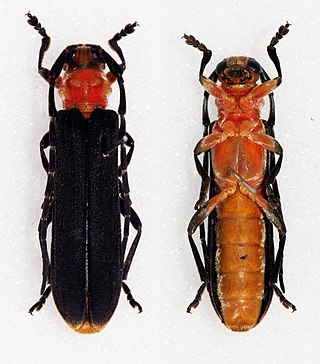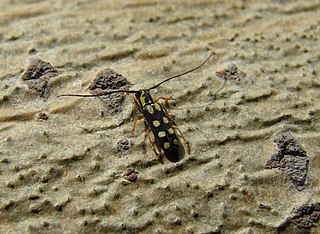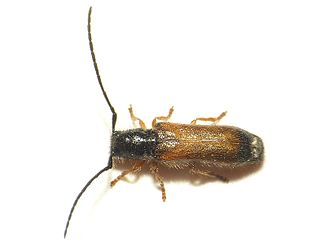
Honeysuckles are arching shrubs or twining vines in the genus Lonicera of the family Caprifoliaceae. It includes 158 species native to northern latitudes in North America, Eurasia, and North Africa. Widely known species include Lonicera periclymenum, Lonicera japonica and Lonicera sempervirens. L. japonica is a highly invasive species considered a significant pest in parts of North America, Europe, South America, Australia, and Africa.

Cucurbita pepo is a cultivated plant of the genus Cucurbita. It yields varieties of winter squash and pumpkin, but the most widespread varieties belong to the subspecies Cucurbita pepo subsp. pepo, called summer squash.

Lonicera japonica, known as Japanese honeysuckle and golden-and-silver honeysuckle, is a species of honeysuckle native to East Asia, including many parts of China. It is often grown as an ornamental plant, but has become an invasive species in a number of countries. Japanese honeysuckle is used in traditional Chinese medicine.

Osmunda regalis, or royal fern, is a species of deciduous fern, native to Europe, Africa and Asia, growing in woodland bogs and on the banks of streams. The species is sometimes known as flowering fern due to the appearance of its fertile fronds.

Pseudosasa japonica, the arrow bamboo or metake, is a species of flowering plant in the grass family Poaceae, native to Japan and Korea. This vigorous bamboo forms thickets up to 6 m (20 ft) tall with shiny leaves up to 25 cm (9.8 in) long. The culms are typically yellow-brown and it has palm-like leaves. The common name "arrow bamboo" results from the Japanese Samurai using its hard and stiff canes for their arrows. It grows up to 4 cm (1.6 in) a day.

Linda is a genus of longhorn beetles of the subfamily Lamiinae, containing the following species:
Coptosia bithynensis is a species of beetle in the family Cerambycidae. It was described by Ganglbauer in 1884, originally under the genus Phytoecia. It is known from Bulgaria, Turkey, Armenia, and possibly Romania.
Linda apicalis is a species of flat-faced longhorn in the beetle family Cerambycidae. It is found in China, including Tibet.
Linda fasciculata is a species of flat-faced longhorn in the beetle family Cerambycidae. It is found in China and Vietnam.
Linda javanica is a species of beetle in the family Cerambycidae. It was described by Vuillet in 1912. It is known from Sumatra and Java.
Linda atricornis is a species of flat-faced longhorn in the beetle family Cerambycidae. It is found in China and Mongolia.
Linda gracilicornis is a species of beetle in the family Cerambycidae. It was described by Maurice Pic in 1907.

Menesia sulphurata is a species of beetle in the family Cerambycidae. It was described by Gebler in 1825, originally under the genus Saperda. It is known from Mongolia, Kazakhstan, Japan, China, and Russia.

Paraglenea fortunei is a species of beetle in the family Cerambycidae. It was described by Saunders in 1853, originally under the genus Glenea. It is known from Taiwan, China, North Korea, South Korea, and Vietnam, and has been introduced into Japan. It feeds on Cinnamomum camphora, Boehmeria nivea, Hibiscus syriacus, Morus alba, and Triadica sebifera.

Phytoecia puncticollis is a species of beetle in the family Cerambycidae. It was described by Faldermann in 1837. It is known from Russia, Azerbaijan, Georgia, Iraq, Armenia, Turkey, Iran, and Turkmenistan. It feeds on Eryngium billardierei.
Phytoecia gaubilii is a species of beetle in the family Cerambycidae. It was described by Mulsant in 1851. It is known from Tunisia and Algeria.

Phytoecia rufiventris is a species of beetle in the family Cerambycidae. It was described by Gautier des Cottes in 1870. It is known from Russia, Japan, Taiwan, Mongolia, North Korea, South Korea, China, and Vietnam. It feeds on Artemisia vulgaris.

Tetrops starkii is a species of beetle in the family Cerambycidae. It was described by Louis Alexandre Auguste Chevrolat in 1859. It has a wide distribution in Europe. It feeds on Fraxinus excelsior and Fraxinus angustifolia.

Gleditsia japonica, the Japanese locust, is a species of flowering plant in the family Fabaceae, native to the eastern Himalayas, central and southern China, Manchuria, Korea, and central and southern Japan. It is used as a street tree in a number of cities in China and Europe.

Wisteriopsis japonica is a species of flowering plant in the family Fabaceae, native to Japan, Korea, and the Ryukyu Islands. It was first described in 1839 as Wisteria japonica.












